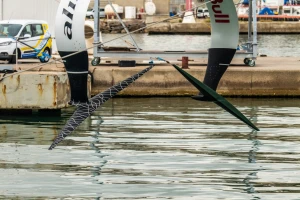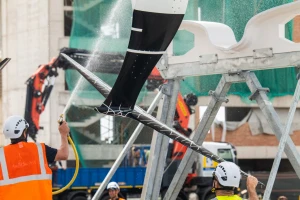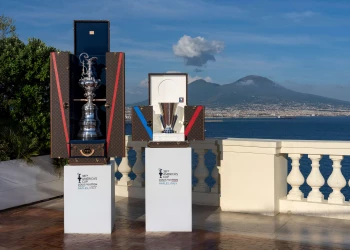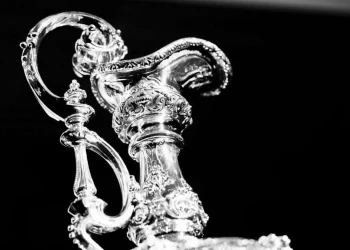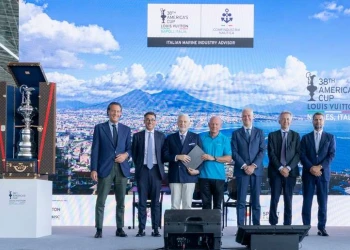
America's Cup, Alinghi RedBull reveal the tubercle foil
America's Cup, Alinghi RedBull reveal the tubercle foil
Alinghi Red Bull Racing have, to date, kept their design cards close to their chest with only small reveals of direction and thinking on the AC75 in terms of deck layout and some systems controls. What the America’s Cup world has been keen to see though is Marcelo Botin’s thoughts on foil design and today out in Barcelona, the first new Swiss foil broke cover, mounted on the team’s AC40 that now goes into LEQ12 development mode.
Mounted on the port side of the AC40, the most obvious observation is the size of the bulb. All the designers, ideally, would like to have the smallest bulb as the drag effect is considerable and the Swiss have revealed the most slender profile, even more slender than American Magic’s starboard profile, of this current America’s Cup cycle.
Looking at the foils themselves, what we see on the outer foil, masked in a crazy web of eye-bending decals, is a leading edge with tubercles. The ‘tubercle effect’ is a phenomenon in which tubercles, or large raised bumps on the leading edge of a wing, blade, or sail increase its aerodynamic or hydrodynamic performance. Research on this topic was inspired by the work of marine biologists on the behaviour of humpback whales and although not new to the America’s Cup, it’s interesting to see the Swiss adopt this for the outer, potentially, surface-breaking foil.
Alinghi Red Bull Racing have opted for quite a lot of volume in the foils whilst the lower foil arm, connecting to the teeny bulb, is swept forward to marry only an inch or so from the bulb tip. The wings themselves and the overall profile of the foil is swept backwards in a triangular shape and the underside recon shots reveal the hinge mechanism for the double foils similar to what we have seen on the INEOS Britannia new starboard foil and Luna Rossa Prada Pirelli’s latest version. The volume of the new wing is considerable and there look to be no aero bumps up the foil arm hiding weight to maintain the minimum, so all the weight is low in the foil and the foil arm looks to be at maximum length/depth. Interestingly no winglets on either the inner or outer foil – something we do see across the other teams in the fight to reduce leeway.
Unfortunately, the conditions in Barcelona were more winter than Spring today with what the recon team described as an “aggressive chop” and a very “messy sea state.” In those conditions and with new technology onboard, the Swiss opted for a three nautical mile tow test with foil designer Nico Bailey onboard and then took the AC40 back into the Port Vell base where the sail technicians jumped onboard with what is assumed to be a new mainsail for the AC40. Much attention was being paid to the battening at the head and the headboard area itself. We will wait to see it in action in the coming days.
Overall, this was a step-change day for Alinghi Red Bull Racing and one that reveals much about the team’s thinking and design programme. Refinements and iterations are sure to follow in the coming weeks but the technology arms-race for the 37th America’s Cup is well and truly on. Stay tuned.





